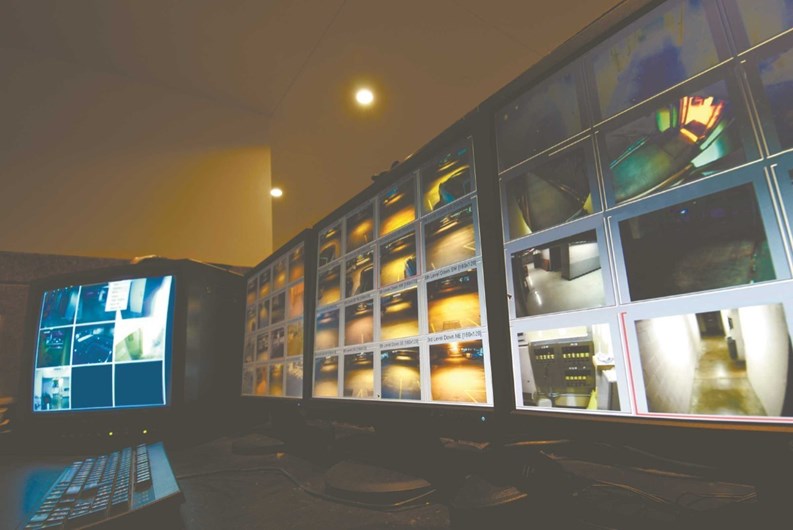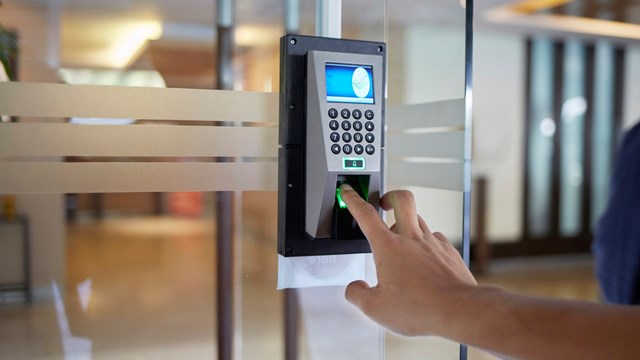Push aside old notions of ineffective security officers. The security officer of the future has arrived. Today’s security officer may be navigating tours on a Segway to patrol airports, transit stations, manufacturing facilities, apartment or condominium complexes, shopping malls and campuses. With the advent of the broadband revolution, you may find today’s highly skilled and trained security officer piloting, what looks like, the Starship Enterprise of technology, with a host of IP-connected digital applications that include closed circuit television (CCTV), life and fire safety systems, and remote online access control systems.
Updates to post assignments can be communicated electronically and training conducted online. Today’s officer is searching for and locating potential threats to his customer’s assets using technologically-advanced surveillance systems that feature high tech full-motion, real-time millimeter wave imaging capabilities. That technology allows officers to identify potential threats quickly and discretely, from a distance, and without conducting a physical pat down or alerting others to the situation and causing panic and general disruption.
Security officers of the “future” working today at Chicago’s Sears Tower, and many other secured facilities and buildings around the country, operate a computerized system from a company called Infrasafe, which comprehensively tracks and controls visitors to the building's tenants. When guests arrive, building officers verify the identity of the visitor through the system. Once verified, a real-time notification of the visitor's arrival is sent to the host and the guest badge is automatically printed, enabling guest access to the building.
Additionally, post 9/11--officers use advanced integrated security solutions based on trace detection equipment and x-ray screening systems. These systems, managed by trained officers, help safeguard those on the front line and the public at large; protecting buildings and transportation systems, and screening everything from a ticket to a truck.
As the role of the security officer shifts, so has the size of the industry. The Freedonia Group, an international business research company, reports that the number of security officers employed is at historically high levels. In fact, the number of security officers working for private security firms is expected to increase 3.6 percent per year to 780,000 in 2010 from 537,000 in 2000.
State-of-the-Art Training Vital
How can you ensure that your security officers are optimally deployed, responsible and accountable? State-of-the-art training is crucial in keeping the burgeoning physical security workforce ready and able to take on the daily challenges they face. The digital revolution is transforming our culture and is clearly altering the way we communicate with each other. Nowhere is technology’s power more visibly demonstrated than with training. Factor in digital training that educates, empowers and connects the vital security officer sector, and you have a game plan for success.
Today’s security leaders are making training not only better, but more accessible. Taking advantage of technological advancements, and the fact that many of today’s security officers are avid computer-users, security companies have created online training programs for their officers. This is especially ideal for officers who would like to continue their standard training but work in remote locations or work atypical hours—making attending classroom training in a district office a challenge.
Integration: Security’s Buzz Word
As the security officer, and the security industry, continues to evolve and advance, integration is the buzz word du jour with increasingly complex and disparate systems being integrated on a single platform. Disparate functions including incident reporting, camera monitoring and security officer tour systems are all integrated to create a comprehensive program.
While the past may have seen either a security officer or a security camera, today, we often see both. And, not as two separate functions but as an integrated system. Add to that an access control system and sophisticated motion sensors and you have an integrated system. Is this all too much? While the industry may be exploding with products, systems and choices, the ideal is a carefully selected and integrated suite of security solutions specific to the needs of a particular location or building.
As vice president of commercial real estate for a major contract security officer company, I often hear property managers or business owners say, “Yes, it’s technologically advanced, but what value do I get from integration?” Not only is this a good question for the security industry to answer, it should probably be the focal question. It is important to take a balanced approach when reviewing the benefits of security system integration and design a system that has the right elements for each location. To do this, a careful review of the facility, security policies and procedures, technology and personnel is necessary.
Creating a security solution where all of the pieces work together is essential to creating a safe and secure environment regardless of how simple or complex the security picture is. Today’s officers are a critical piece of the security puzzle and often the first line of defense against many threats. The security industry must continue to be proactive about developing programs and solutions that can help them perform at their best.
Post 9/11 Realities
The development of meaningful security protocols has come full circle since the world events of September 11, 2001, with the economy, the state of the commercial real estate market and the ever-present threat of future terrorist attacks. Operating costs have increased significantly in providing base and preparedness level staffing needs. Tenants and residents have increased expectations of security programs, and we all have the responsibility to provide a safe and secure environment. All of these factors create a significant challenge to the buyer and service provider.
The security officer of the future brings a whole new set of considerations for the end user. The property manager or security director making the security decisions now views the security officer as a professional employee. An average wage and clean uniform are no longer enough. Today’s officers receive competitive wages, comprehensive benefits, and award-winning training. And, there are also extensive recruiting efforts to identify quality applicants and retention and recognition programs designed to keep them.
Safe and secure facilities are the expectation. Administrators and property managers are expected to provide protection for building tenants, residents, employees and visitors. An investment in current and comprehensive security technology, married with continually trained and technologically literate officers, is the most effective and cost-efficient form of liability insurance and protection against crime.
Cost, insurance, employee benefits, performance tracking, wages and training are all considerations when security providers are considered. In this new area of security, life may have become more complex for the security decision maker but that is for good reason. Today’s security is more complex.
These considerations are a reflection of the changed perception on the part of the security director, security company, general public, and the security officers themselves. A position as security officer is now regarded as a career, not just a job. Security officers now seek additional training as a path to upward mobility and today’s security leaders are recognizing that. Shift and site supervisor positions are sought after by those security officers wanting to advance their security careers and account management positions are the next step up the ladder.
Security and Law
Enforcement Partnership
The relationship with law enforcement has also progressed as well. Today’s security officers often work in conjunction with police officers. Many locations benefit from a mix of security and law enforcement officers. This revolution of change in the security officer and the security industry is incredible. Security officers are well-trained and dedicated to their site and the industry, often rising through the ranks after careers in law enforcement or the military. Today's security officers are better equipped and better respected, and security industry leaders have raised the bar on training, wages and benefits.
Equipped with computer skills and security training, today’s security officer is not complacent. Rather, he or she is technologically-savvy and committed to continual training. The security officer of the future is working in your facility today. Security officers are the first line of defense and work tirelessly for our protection. Behind the public face of the security officer lives an expertly prepared and ever vigilant security professional who is well-trained and supported by cutting edge, integrated technology.
J. Michael Coleman is vice president of marketing and commercial real estate for AlliedBarton Security Services in Philadelphia.







Leave a Comment